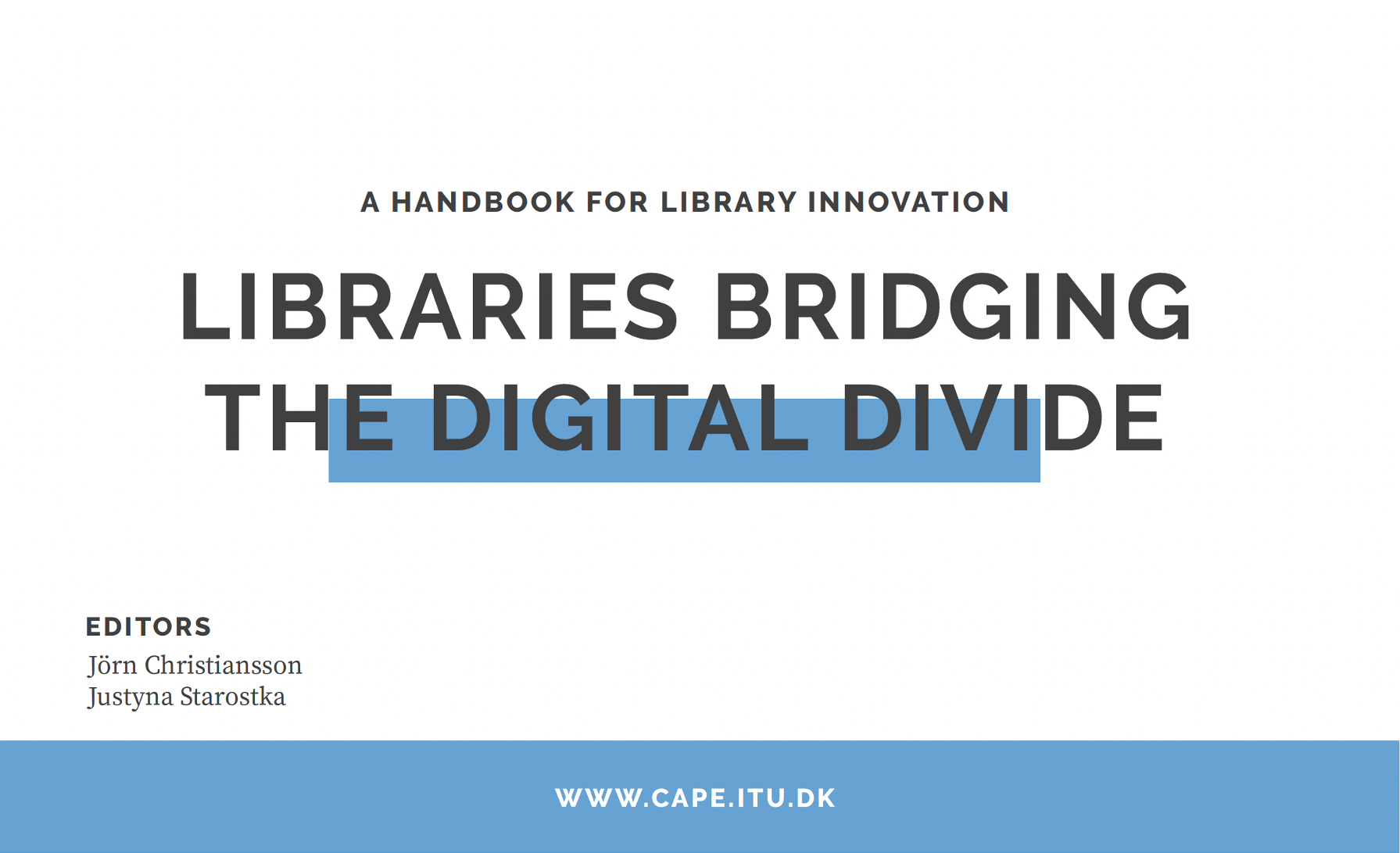INTRODUCTION
The role of libraries has evolved significantly in recent years. As society becomes more digital and interconnected, libraries have expanded their scope beyond traditional book lending to become community hubs that offer a wide range of services and resources.
It is in this new role libraries and librarians have the potential to play a more significant part in helping to bridge the digital divide and similar gaps between citizen and administration, where the expectations to the citizen doesn’t match the citizen’s abilities.
Here the library can act as a buffer between typically vulnerable groups, e.g. elderly and immigrants, by providing ad hoc services or supporting groups of local volunteers that help citizens to access (digital) public services. But also as a bridge between citizens’ needs and the developers of public services.
THE LIBRARY HANDBOOK
This handbook is not only meant to inspire librarians about possible future developments of libraries, but also include information on the social mechanisms that make it possible to place libraries back in the centre of civic life.
For public service developers the handbook suggests that the open interaction happening in the library can be a resource for an open and transparent development of new public services and improvement of existing ones, not least with the suggestion that libraries can become an important resource to support the participation of the most marginalised groups.
The libraries are a space for inspiration, creation, exploration and participation, and with their strong tradition in promoting citizen engagement, democracy and learning they can become a civic innovation center, where citizens can engage in improving public digital services.
With this handbook, produced within the project CAPE (Civic Agency in Public E-service innovation), we aim to help librarians embrace this new role, providing practical guidance and insights on how to bridge these gaps, and hope to contribute to the knowledge of librarians and public service developers, as it offers a perspective that considers libraries at the centre of a process of public innovation and social inclusion.
DOWNLOAD THE HANDBOOK BY CLICKING BELOW:
DOWNLOAD THE HANDBOOK IN YOUR LOCAL LANGUAGE:
🇩🇰 EN HÅNDBOG OM BIBLIOTEKSINNOVATION

